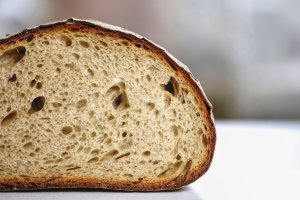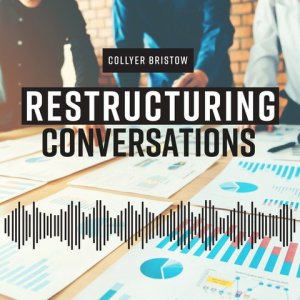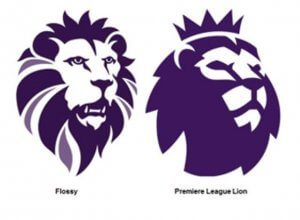- Intellectual property
- Intellectual property disputes
- Manufacturing

Longer Reads
Making Waves: IPEC finds fabric design a work of artistic craftmanship
6 minute read
Published 11 February 2020
Key information
In Response Clothing Limited -v- Edinburgh Woollen Mill Limited [2020] EWHC 148(IPEC) His Honour Judge Hacon has made a rare finding that a fabric design incorporating a wave pattern constituted a work of artistic craftsmanship and therefore qualified for copyright protection. The case also raises a number of other interesting points regarding subsistence and infringement of copyright under both UK and EU law.
The defendant, EWM, had originally bought tops made from the wave fabric from the claimant, Response. However, in 2012 EWM stopped buying from the Response. EWM sent a sample of the fabric to other suppliers and asked if they could make similar tops. It then purchased tops from three other suppliers. Response alleged that these replacement products infringed its copyright.
The decision is unusual because there are very few cases on what constitutes a work of artistic craftsmanship, and most of the authority has concluded that the works in question did not qualify. In Hensher -v- Restawhile [1975], a case involving the design of a popular suite of furniture, the House of Lords struggled to define the characteristics of a work of artistic craftsmanship but ruled that the prototype design did not qualify. More recently, in Lucasfilm Limited -v- Ainsworth [2011], Mann J concluded that the design of the helmets and armour worn by the Imperial Stormtrooper characters in the Star Wars films were works of craftsmanship, but not of artistic craftsmanship. He considered that their purpose was not to appeal to the aesthetic, but rather to give a particular impression in a film. The case was appealed to the Supreme Court, but no decision was made on this issue.
UK Copyright Protection
In the present case, Judge Hacon had to consider whether a Jacquard fabric with a wave design woven into it could constitute a work of artistic craftsmanship. The design had been created by an employee of a South Korean manufacturer on a knitting machine. Such copyright as existed in the design had been assigned to Response.
Response asserted that the design was both a graphic work and/or a work of artistic craftsmanship. Since there was no pre-existing drawing or diagram, the question was whether the fabric could be considered an “engraving, etching, lithographic, woodcut or similar work” under section 4(1)(a) of the Copyright, Designs and Patents Act 1988 (CDPA). The Judge rejected this assertion.
On the question of whether the design could be a work of artistic craftsmanship, the judge considered the case law in detail. Mann J in Lucasfilm had applied a New Zealand case, Bonz Group (Pty) Limited -v- Cooke [1994] to help him to formulate a definition. He approved the test set out by Tipping J in that case:
“for a work to be regarded as one of artistic craftsmanship it must be possible fairly to say that the author was both a craftsman and an artist. A craftsman is a person who makes something in a skilful way and takes justified pride in their workmanship. An artist is a person with creative ability who produces something which has aesthetic appeal”.
EWM argued that the wave fabric was not “craftsmanship” because it was made on a machine. The judge rejected this contention, citing the example of a potter working with clay on a wheel. He also held that the work met the criterion of being artistic, because the fabric designer would either have intended the fabric to have aesthetic appeal, or that customers must have found it aesthetically pleasing, because clothing made from the fabric was popular.
The judge acknowledged that had the same question been put to the judges in Hensher, they would almost certainly have concluded that this was not a work of artistic craftsmanship. One objection raised by some of the Law Lords was that a product that was designed for mass production and sale was unlikely to have the necessary aesthetic quality.
The judge also noted that under section 4 of the CDPA, artistic quality is irrelevant to the assessment of whether most things qualify as artistic works. However, in deciding whether a work of artistic craftsmanship qualifies, the “artistic” element does seem to be relevant.
There was a division of opinion in Hensher whether “artistic” quality is a subjective or an objective assessment, exactly what “artistic” means in this context and also exactly what constitutes “craftsmanship”. The judge therefore concluded that no binding principles can be deduced from Hensher which might have compelled him to conclude that the wave fabric was not a work of artistic craftsmanship. He preferred the view that artistic quality is a subjective assessment, following the Bonz decision, although expert opinion may assist the court to make its decision.
EU Copyright Protection
Having reached that conclusion under English law, the judge then considered the European Copyright Directive. Article 2 provides that:
“member states shall provide for the exclusive right to authorise or prohibit … reproduction by any means and in any form in whole or in part (a) for authors of their works …”.
In Levola Hengelo BV -v- Smilde Foods BV [2019] the CJEU set out two requirements for what constitutes a “work” for the purposes of Article 2:
- the subject matter concerned must be original, in the sense that it is the author’s own intellectual creation; and
- only something which is the expression of the author’s own intellectual creation may be classified as a work.
That decision also referred to Article 2(1) of the Berne Convention on copyright and says that the Directive must be taken to include all forms of literary and artistic works listed in Berne, although the Convention does not specify works or artistic craftsmanship.
In Cofemel -v- G-Star Raw [2019], an action in Portugal alleging infringement of copyright in the design of jeans, sweatshirts and t-shirts, Cofemel argued that the designs were not eligible for protection as artistic works. The Portuguese Court asked the CJEU to rule whether it was permissible for Portuguese law to include a requirement for a particular degree of aesthetic or artistic value. The CJEU ruled that national law could not impose a requirement about aesthetic or artistic value. Protection merely required the work to be original and an expression of the author’s free and creative choices. It added that if a design is dictated solely by technical features, that will not satisfy the creative freedom requirements.
Following these decisions, the judge concluded that the wave fabric was original in that its design was its author’s own intellectual creation and so it was protected as a copyright work under the Directive. The judge accepted that there was an inconsistency in that EU law excluded any requirement of aesthetic merit in assessing whether a work qualified for copyright protection in contrast to the requirements in the Bonz decision for a work of artistic craftsmanship to exist. However, he considered that he did not have to resolve that inconsistency, since he had found that the fabric qualified for copyright protection either as a work of artistic craftsmanship under the CDPA or under Article 2 of the Copyright Directive.
Originality / Copying
EWMs challenged the originality of the design. The burden of proof is on the claimant to establish originality rather than for the defendant to prove that a work is not original. The only evidence Response could produce was a witness statement from the director of the South Korean company that the design was not copied from anything else. The judge accepted that. Unhelpfully for EWM, it had given evidence that it had carried out thorough enquiries, particularly in the Far East, to search out fabrics available from an earlier date which were similar to the wave fabric, but those enquiries had proved unsuccessful.
The Expert evidence was fairly clear that the fabric which EWM had commissioned and sold had been copied from the wave fabric design. EWM challenged whether what had been copied was a ‘substantial part’ of the original design, in the sense what was taken was the author’s intellectual creation. The Judge was satisfied that it was.
Primary / Secondary Infringement
EWM had commissioned the fabric used to make products similar to tops that Response had previously supplied to it from three different sources. Two of the suppliers were based outside the EEA. The third supplier was based in the UK.
In assessing primary infringement of issuing copies of the work to the public, EWM accepted that if the wave design was a work of artistic craftsmanship, then products from the two non-EEA suppliers would constitute the first marketing of those goods in the EEA. So far as the supplier based in the UK was concerned, it argued that the first supply in the EEA was from that entity to EWM, so that EWM’s sales were no longer “restricted acts”. Although this was a sale from a supplier to a retailer, and not a sale directly to the public, the judge followed Peak Holding AB -v- Axolin-Elinor AB, in which the CJEU held
“a sale which allows the proprietor to realise the economic value of his trade mark exhausts the exclusive rights conferred by the Directive, more particularly the right to prohibit the acquiring third party from reselling the goods”.
Consequently, there was no primary infringement on the products from the UK supplier
The judge then turned to the question of whether there was secondary infringement under section 23 of the CDPA by selling an article which EWM knows or believes or has reason to believe is an infringing copy of the work. The question was whether the facts would have led a reasonable person to believe that dealing in the copies would be in breach of a right in the nature of copyright held by some other person. Mere suspicion would not have been enough.
EWM had admitted in its defence that it had supplied a sample of a top made from the wave fabric to alternative suppliers, including the UK supplier, along with a specification sheet. While EWM’s evidence was that it had not asked for a direct copy, they were clearly happy to receive something which looked very similar indeed. While the individual placing the order may not have believed that the commissioned products infringed copyright, the judge held that a reasonable person in her position would have realised that copyright had been infringed, so EWM was a secondary infringer.
Conclusion
The case raises several interesting issues. It has long been an anomaly that although UK copyright law provides protection for works of artistic craftsmanship, it has been almost impossible for any works to meet the criteria set out in Hensher. The judge conceded that an attempt to apply that approach would almost certainly have reached a different conclusion on these facts but did not feel obliged to follow that authority. His reasoning, that there was no principle of law that required him to conclude that the fabric design was not a work of artistic craftsmanship with aesthetic appeal, is certainly bold. The Bonz principles are certainly more straightforward to apply in practice. It will be interesting to see if this decision is appealed, and if so, whether the judge’s approach to all or some of the issues will be upheld.
Related content
Longer Reads
Making Waves: IPEC finds fabric design a work of artistic craftmanship
Published 11 February 2020
Associated sectors / services
Authors
In Response Clothing Limited -v- Edinburgh Woollen Mill Limited [2020] EWHC 148(IPEC) His Honour Judge Hacon has made a rare finding that a fabric design incorporating a wave pattern constituted a work of artistic craftsmanship and therefore qualified for copyright protection. The case also raises a number of other interesting points regarding subsistence and infringement of copyright under both UK and EU law.
The defendant, EWM, had originally bought tops made from the wave fabric from the claimant, Response. However, in 2012 EWM stopped buying from the Response. EWM sent a sample of the fabric to other suppliers and asked if they could make similar tops. It then purchased tops from three other suppliers. Response alleged that these replacement products infringed its copyright.
The decision is unusual because there are very few cases on what constitutes a work of artistic craftsmanship, and most of the authority has concluded that the works in question did not qualify. In Hensher -v- Restawhile [1975], a case involving the design of a popular suite of furniture, the House of Lords struggled to define the characteristics of a work of artistic craftsmanship but ruled that the prototype design did not qualify. More recently, in Lucasfilm Limited -v- Ainsworth [2011], Mann J concluded that the design of the helmets and armour worn by the Imperial Stormtrooper characters in the Star Wars films were works of craftsmanship, but not of artistic craftsmanship. He considered that their purpose was not to appeal to the aesthetic, but rather to give a particular impression in a film. The case was appealed to the Supreme Court, but no decision was made on this issue.
UK Copyright Protection
In the present case, Judge Hacon had to consider whether a Jacquard fabric with a wave design woven into it could constitute a work of artistic craftsmanship. The design had been created by an employee of a South Korean manufacturer on a knitting machine. Such copyright as existed in the design had been assigned to Response.
Response asserted that the design was both a graphic work and/or a work of artistic craftsmanship. Since there was no pre-existing drawing or diagram, the question was whether the fabric could be considered an “engraving, etching, lithographic, woodcut or similar work” under section 4(1)(a) of the Copyright, Designs and Patents Act 1988 (CDPA). The Judge rejected this assertion.
On the question of whether the design could be a work of artistic craftsmanship, the judge considered the case law in detail. Mann J in Lucasfilm had applied a New Zealand case, Bonz Group (Pty) Limited -v- Cooke [1994] to help him to formulate a definition. He approved the test set out by Tipping J in that case:
“for a work to be regarded as one of artistic craftsmanship it must be possible fairly to say that the author was both a craftsman and an artist. A craftsman is a person who makes something in a skilful way and takes justified pride in their workmanship. An artist is a person with creative ability who produces something which has aesthetic appeal”.
EWM argued that the wave fabric was not “craftsmanship” because it was made on a machine. The judge rejected this contention, citing the example of a potter working with clay on a wheel. He also held that the work met the criterion of being artistic, because the fabric designer would either have intended the fabric to have aesthetic appeal, or that customers must have found it aesthetically pleasing, because clothing made from the fabric was popular.
The judge acknowledged that had the same question been put to the judges in Hensher, they would almost certainly have concluded that this was not a work of artistic craftsmanship. One objection raised by some of the Law Lords was that a product that was designed for mass production and sale was unlikely to have the necessary aesthetic quality.
The judge also noted that under section 4 of the CDPA, artistic quality is irrelevant to the assessment of whether most things qualify as artistic works. However, in deciding whether a work of artistic craftsmanship qualifies, the “artistic” element does seem to be relevant.
There was a division of opinion in Hensher whether “artistic” quality is a subjective or an objective assessment, exactly what “artistic” means in this context and also exactly what constitutes “craftsmanship”. The judge therefore concluded that no binding principles can be deduced from Hensher which might have compelled him to conclude that the wave fabric was not a work of artistic craftsmanship. He preferred the view that artistic quality is a subjective assessment, following the Bonz decision, although expert opinion may assist the court to make its decision.
EU Copyright Protection
Having reached that conclusion under English law, the judge then considered the European Copyright Directive. Article 2 provides that:
“member states shall provide for the exclusive right to authorise or prohibit … reproduction by any means and in any form in whole or in part (a) for authors of their works …”.
In Levola Hengelo BV -v- Smilde Foods BV [2019] the CJEU set out two requirements for what constitutes a “work” for the purposes of Article 2:
- the subject matter concerned must be original, in the sense that it is the author’s own intellectual creation; and
- only something which is the expression of the author’s own intellectual creation may be classified as a work.
That decision also referred to Article 2(1) of the Berne Convention on copyright and says that the Directive must be taken to include all forms of literary and artistic works listed in Berne, although the Convention does not specify works or artistic craftsmanship.
In Cofemel -v- G-Star Raw [2019], an action in Portugal alleging infringement of copyright in the design of jeans, sweatshirts and t-shirts, Cofemel argued that the designs were not eligible for protection as artistic works. The Portuguese Court asked the CJEU to rule whether it was permissible for Portuguese law to include a requirement for a particular degree of aesthetic or artistic value. The CJEU ruled that national law could not impose a requirement about aesthetic or artistic value. Protection merely required the work to be original and an expression of the author’s free and creative choices. It added that if a design is dictated solely by technical features, that will not satisfy the creative freedom requirements.
Following these decisions, the judge concluded that the wave fabric was original in that its design was its author’s own intellectual creation and so it was protected as a copyright work under the Directive. The judge accepted that there was an inconsistency in that EU law excluded any requirement of aesthetic merit in assessing whether a work qualified for copyright protection in contrast to the requirements in the Bonz decision for a work of artistic craftsmanship to exist. However, he considered that he did not have to resolve that inconsistency, since he had found that the fabric qualified for copyright protection either as a work of artistic craftsmanship under the CDPA or under Article 2 of the Copyright Directive.
Originality / Copying
EWMs challenged the originality of the design. The burden of proof is on the claimant to establish originality rather than for the defendant to prove that a work is not original. The only evidence Response could produce was a witness statement from the director of the South Korean company that the design was not copied from anything else. The judge accepted that. Unhelpfully for EWM, it had given evidence that it had carried out thorough enquiries, particularly in the Far East, to search out fabrics available from an earlier date which were similar to the wave fabric, but those enquiries had proved unsuccessful.
The Expert evidence was fairly clear that the fabric which EWM had commissioned and sold had been copied from the wave fabric design. EWM challenged whether what had been copied was a ‘substantial part’ of the original design, in the sense what was taken was the author’s intellectual creation. The Judge was satisfied that it was.
Primary / Secondary Infringement
EWM had commissioned the fabric used to make products similar to tops that Response had previously supplied to it from three different sources. Two of the suppliers were based outside the EEA. The third supplier was based in the UK.
In assessing primary infringement of issuing copies of the work to the public, EWM accepted that if the wave design was a work of artistic craftsmanship, then products from the two non-EEA suppliers would constitute the first marketing of those goods in the EEA. So far as the supplier based in the UK was concerned, it argued that the first supply in the EEA was from that entity to EWM, so that EWM’s sales were no longer “restricted acts”. Although this was a sale from a supplier to a retailer, and not a sale directly to the public, the judge followed Peak Holding AB -v- Axolin-Elinor AB, in which the CJEU held
“a sale which allows the proprietor to realise the economic value of his trade mark exhausts the exclusive rights conferred by the Directive, more particularly the right to prohibit the acquiring third party from reselling the goods”.
Consequently, there was no primary infringement on the products from the UK supplier
The judge then turned to the question of whether there was secondary infringement under section 23 of the CDPA by selling an article which EWM knows or believes or has reason to believe is an infringing copy of the work. The question was whether the facts would have led a reasonable person to believe that dealing in the copies would be in breach of a right in the nature of copyright held by some other person. Mere suspicion would not have been enough.
EWM had admitted in its defence that it had supplied a sample of a top made from the wave fabric to alternative suppliers, including the UK supplier, along with a specification sheet. While EWM’s evidence was that it had not asked for a direct copy, they were clearly happy to receive something which looked very similar indeed. While the individual placing the order may not have believed that the commissioned products infringed copyright, the judge held that a reasonable person in her position would have realised that copyright had been infringed, so EWM was a secondary infringer.
Conclusion
The case raises several interesting issues. It has long been an anomaly that although UK copyright law provides protection for works of artistic craftsmanship, it has been almost impossible for any works to meet the criteria set out in Hensher. The judge conceded that an attempt to apply that approach would almost certainly have reached a different conclusion on these facts but did not feel obliged to follow that authority. His reasoning, that there was no principle of law that required him to conclude that the fabric design was not a work of artistic craftsmanship with aesthetic appeal, is certainly bold. The Bonz principles are certainly more straightforward to apply in practice. It will be interesting to see if this decision is appealed, and if so, whether the judge’s approach to all or some of the issues will be upheld.
Associated sectors / services
- Intellectual property
- Intellectual property disputes
- Manufacturing
Authors
Need some more information? Make an enquiry below.
Subscribe
Please add your details and your areas of interest below
Article contributor
Patrick
WheelerPartner - Head of IP & Data Protection
Specialising in Intellectual property disputes, Data protection, Digital, Intellectual property and Manufacturing
Enjoy reading our articles? why not subscribe to notifications so you’ll never miss one?
Subscribe to our articlesMessage us on WhatsApp (calling not available)
Please note that Collyer Bristow provides this service during office hours for general information and enquiries only and that no legal or other professional advice will be provided over the WhatsApp platform. Please also note that if you choose to use this platform your personal data is likely to be processed outside the UK and EEA, including in the US. Appropriate legal or other professional opinion should be taken before taking or omitting to take any action in respect of any specific problem. Collyer Bristow LLP accepts no liability for any loss or damage which may arise from reliance on information provided. All information will be deleted immediately upon completion of a conversation.
Close






















































